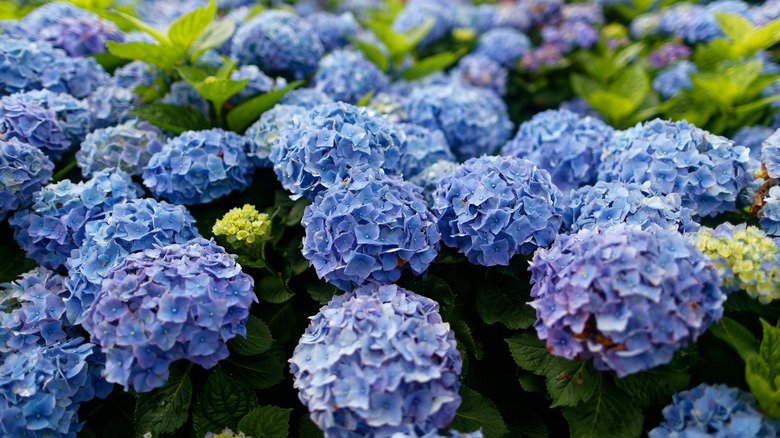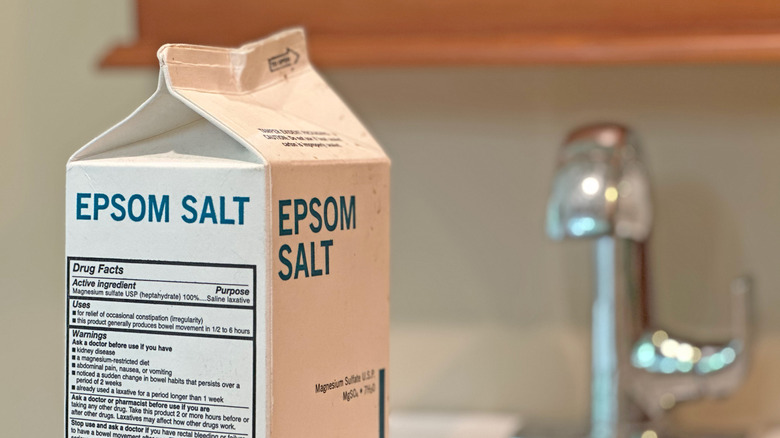This Everyday Household Ingredient Will Give You Lush Hydrangea Blooms - But Be Careful
Let's be honest, the main appeal of hydrangea shrubs are their fluffy, long-lasting blooms. If you want to give you want to give them a boost, you might want to reach for Epsom salt. Just keep in mind Epsom salt isn't a cure-all, and only helps these perennial shrubs under certain conditions.
First of all, Epsom salt is not your average table salt. It was discovered in Epsom, England (thus the name) in 1618 by a farmer whose cattle refused to drink from a pond where this salt was heavily concentrated. But he soon found that animals who waded into it had their wounds heal faster than those that didn't. That's because Epsom salt, unlike table salt, contains the minerals magnesium and sulfur, which helps reduce inflammation and encourages minor cuts to heal. It also can soothe sore muscles during a nice soak in the bath.
Some gardeners swear Epsom salt is one of the miracle fertilizers for flowering plants, but know that the scientific research on this is limited. It might be beneficial for blooming hydrangeas in particular circumstances. For instance, if your soil is deficient in magnesium, Epsom salt might help boost this nutrient in the soil, promoting a healthier plant and healthier blooms. Magnesium is important for plant growth, but it's usually only deficient in acidic soils at a pH lower than 5.5. These soils often are also sandy loam. And it's not just acidic soils, either. Soils that are too alkaline might make it harder for plants to absorb what magnesium is actually there, which can also lead to a magnesium deficiency.
Epsom salt might help plants get more magnesium
If you don't have enough magnesium in the soil, it'll show up on the lower (or older) leaves on your hydrangea bush first, where they'll typically turn yellow or might have red edges. Leaves can also curl under, a condition called hooding. A lack of magnesium might cause your entire plant to look sad and puny. If magnesium deficiency is hurting your hydrangea blooms, a dose of Epsom salt might help.
There's another way Epsom salt might come in handy, and that's if you happen to be transplanting your hydrangeas. Epsom salt can help nourish newly transplanted roots of your hydrangea so they grow stronger and absorb more nutrients to produce healthier flowers. Indoor plants might also benefit if you water house plants with Epsom salts.
But just be careful when using Epsom salt on hydrangeas, as too much magnesium can be harmful and lead to a condition called magnesium toxicity. This will hamper your hydrangea's ability to absorb other important nutrients like calcium. Also, too much salt can damage hydrangea roots. So, make sure to test the soil first before you add in an Epsom salt to ensure a lack of magnesium is the reason the hydrangea's leaves are yellowing. Poor drainage might easily be the culprit. If you want a fool-proof way to help hydrangeas, good alternatives to Epsom salt include compost, mulch, or commercial fertilizer, which your hydrangeas might appreciate even more.

